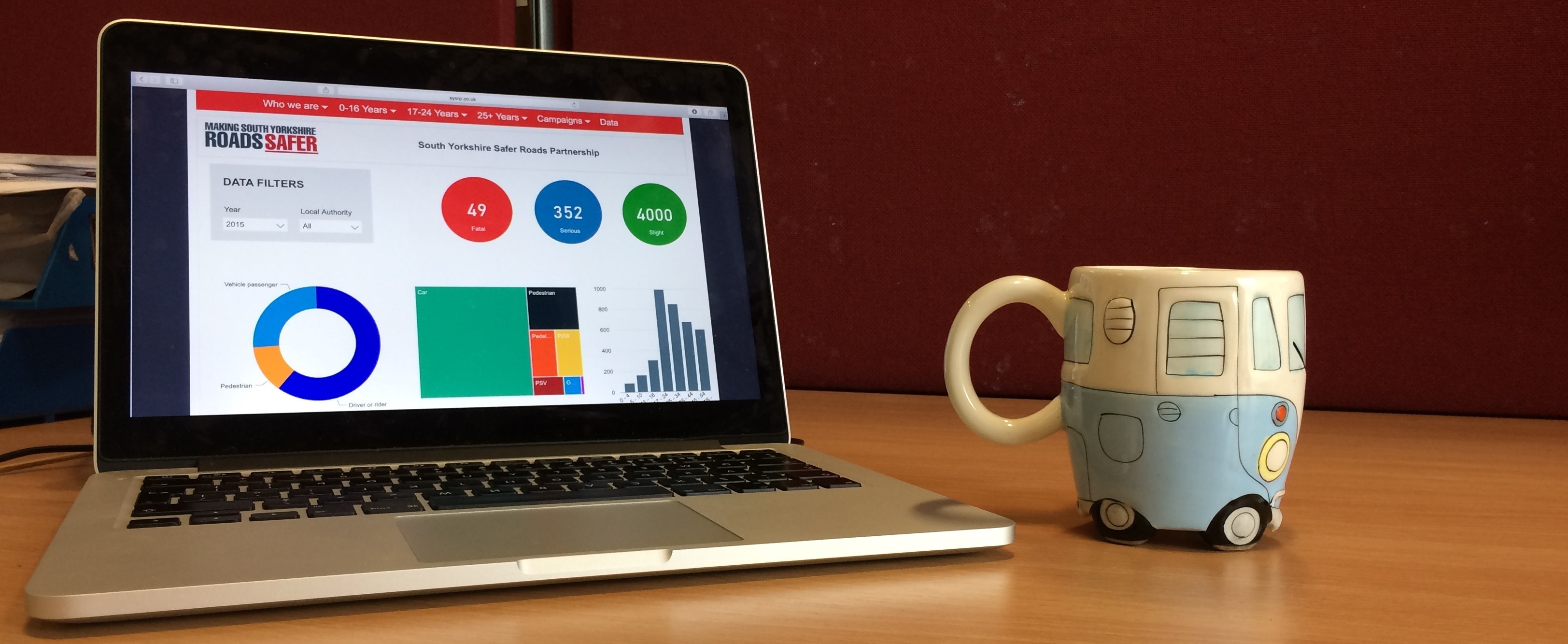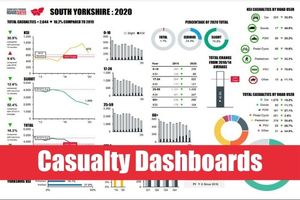Welcome to the Data Portal

Data on road traffic collisions and casualties, known as STATS19 data, are recorded by police forces across Great Britain and are fed centrally to the DfT. South Yorkshire Police share these data with the South Yorkshire Safer Roads Partnership central team and our partners. We then use the data to inform interventions and engineering schemes that make our roads safer for everyone who uses them.
The STATS19 database does not hold information about every collision that happens on our roads. Following national protocol, a collision will only be recorded if;
- It resulted in injury to one or more of the participants (excluding death due to natural causes or confirmed suicide)
- It involved at least one vehicle (this includes non-motorised vehicles such as pedal cycles or ridden horses)
- It commenced on public highway – those maintained by one of the four districts of South Yorkshire or the motorways and trunk roads maintained by Highways England
- It is reported to the police within 30 days of occurring
STATS19 data represent the most complete set of data about road traffic collisions that involve personal injury in Great Britain and include information on circumstances surrounding the collision, the vehicles involved and casualties that have occurred as a result. Every reasonable effort is made to ensure that STATS19 data are correct. The data is validated at the local level by the police and the Safer Roads Partnership central team before being checked again at year end by the DfT. Through these checks most errors can be identified and corrected. In spite of this, inaccuracies can occur and the accuracy of the information provided cannot be guaranteed.
Information about the casualties involved in collisions can be found by using the casualty dashboard link below. Our collision map contains information about the location of collisions on roads around South Yorkshire. For common queries about STATS19 data see our FAQs below. For more technical information, the STATS20 document outlines all variables recorded in STATS19 and gives guidance on how to record them. Information about collisions outside of South Yorkshire can be found on the National Collision Map. If you have any other questions feel free to contact us.
For further information about SYSRP and our campaigns and initiatives, or if you have any queries, then contact us using this form or drop an email to enquiries@sysrp.co.uk.
To keep up-to-date with our many events and initiatives around South Yorkshire then follow us @SYSaferRoads.



